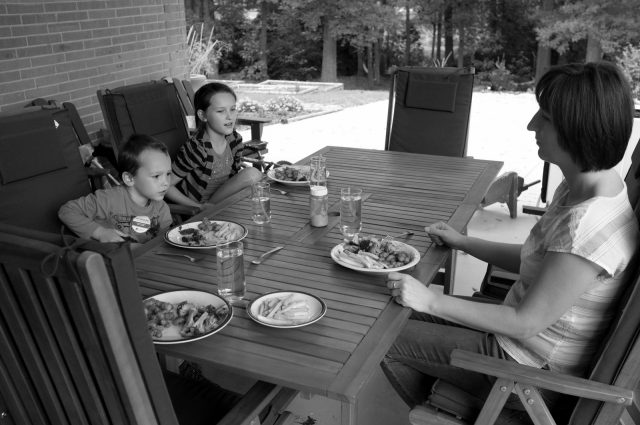We sit around a few tables during a planning period and talk about how to use the data we’ve received from this year’s fall MAP testing, a test which provides information about skill levels of our students. There’s a general score that summarizes everything called the RIT score. (I don’t know what it stands for.) That in turn can be correlated to grade levels by looking at national norms. For the longest time, eighth grade nation norms were 220 at the beginning of the year and 222 at the end. This year, the re-calculated norms have fallen three points. In addition, the data show that in a single, mixed-group classroom (something like science or social studies that is not grouped according to ability), a teacher can have a student reading at the kindergarten level and another reading at the level of a college sophomore, with all the other levels mixed in.
How does one teach a group like that?
There is a predictable corollary to that: the students who read at a second-grade level often behave on a second-grade level. Or perhaps worse, because they exhibit second-grade behavior in nearly-adult size bodies. A dangerous combination at times.
At the dinner table, we talk about our day. L tells us the latest adventures with Timmy, a student who moved here recently from up north and has been seated in L’s group. He refuses to work. He’s mean to other students. He cursed at a teacher today. He flagrantly disobeys. I suggest that he’s probably acting out because he doesn’t want to be there, and he’s hoping his behavior will somehow get him moved back up north. It’s a fairly logical assumption. But here’s the thing: his behavior is affecting my child’s education. The teacher is having to take time out of instruction to deal with him.
“He’s even worse that Demarcus, and I thought he was bad.” Demarcus has been the subject of a few stories, and I’ve found myself thinking that I have a few older versions of him in my classes. Struggling in class. Unable to work and so entertains himself. It’s a common cycle, a chicken-egg mystery by the time they reach my classroom: does the behavior cause the low academic achievement or does the low academic achievement cause the behavior? It’s probably a bit of both.
I kept my story to myself and let E tell how Jameson picked a scab in class and now it will bleed forever. I love how he’s always trying to join in “adult” conversations. He aims, shoots, and hits the target but generally only grazing it on the side.
E’s problem is relatively insignificant; L and I, though, are facing the same issue from two different sides of the desk at two different ends of the same problem. What I can do as a parent is quite different than what I can do as a teacher.
But there’s a third role: citizen. This is an issue that is larger than just my school, L’s school, our district, our state. It’s likely the condition of the majority of schools around the country.
It’s hard not to be pessimistic about this reality.
